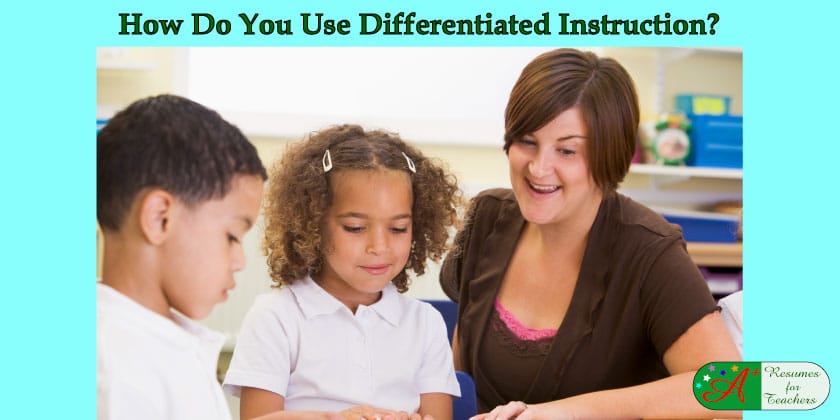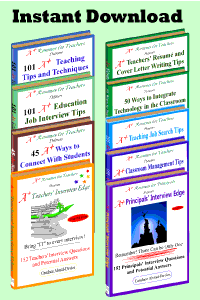Here is a teacher Job Interview Question About Using Differentiated Instruction in the Classroom — How do you use differentiated instruction? Describe the benefits and a lesson you taught using this method of instruction.
Here is an example of a response:
One of my favorite Language Arts lessons that utilize differentiated instruction is one I wrote for my second-grade class. This lesson is tiered in the process according to readiness.
This lesson is differentiated by ability level and is divided into three groups: below grade level learners, at grade-level learners, and above grade level learners. This lesson centers on teaching students how to identify and solve problems by identifying problems in stories and how the characters solve these problems.
The Tier One group will focus on answering factual questions in a comprehension activity either in a group or by completing a worksheet.
Questions would include: Who is the main character? Describe him; What is his problem? How does he solve the problem?
The Tier Two group will analyze the problem using a three-step approach: identify the problem; Explain the process used to solve the process, and evaluate the process – was it a good solution?
After analyzing the problem, the students discuss the other people who helped the main character overcome his problem. The question then becomes: how important are other people in helping to solve problems? Last, create a bubble map with the main character’s problem in the center; write all the things that happened to him because of his problem in the circles connected to the center bubble.
The Tier Three group will focus on a synthesis activity. Students will answer a multistep problem: The main character had (this) problem; However, another character had faith in him; Why did they have faith in him?
Who else in the story had faith in him and helped him out? List these people. After students complete this question, have them answer further, higher-order thinking questions, such as: write what you think will happen next in the story; make a list of five events that happen as a result of people having faith in the main character; what happens when we have faith in our friends?
While the students are working in their groups, I observe and help out where needed. Once students have completed their questions, I bring all students together to discuss ideas. Because each group has a task to complete that can be an important part of the assessment, bringing everyone together to discuss what they have learned about the main character is a great culminating activity.
We have an abundance of interview tips and strategies on the website. Take the time to click around and find some helpful interviewing questions and answers.


